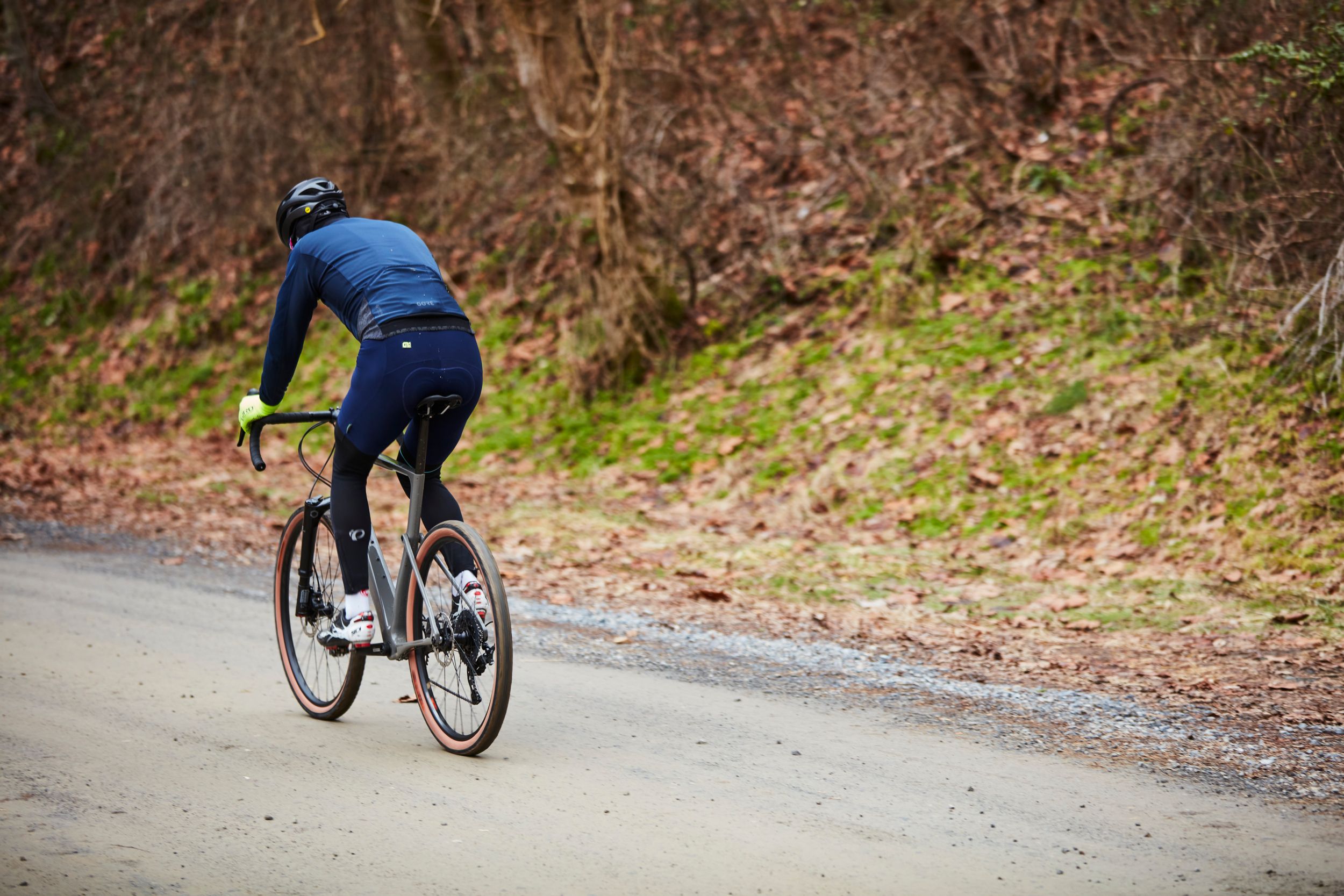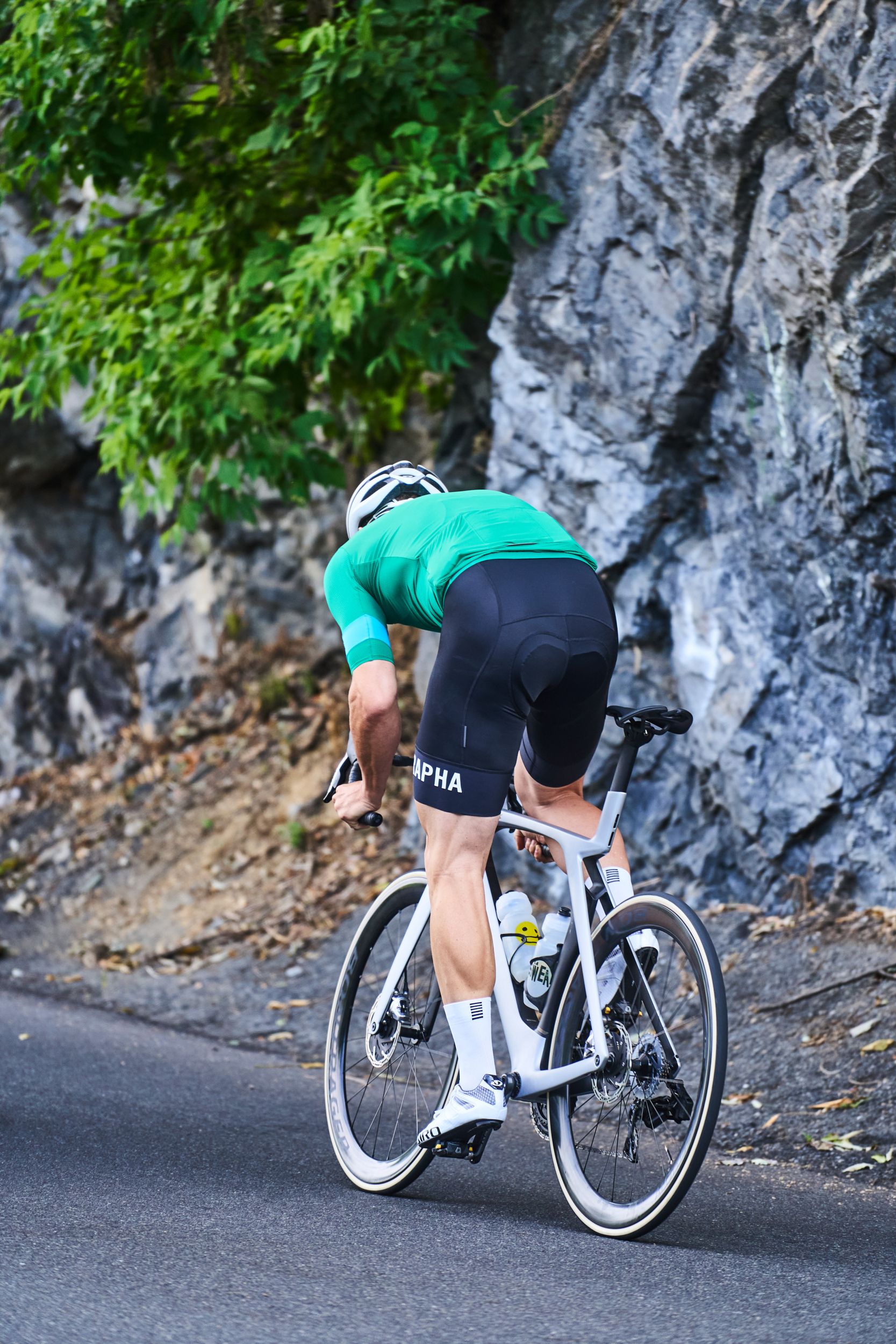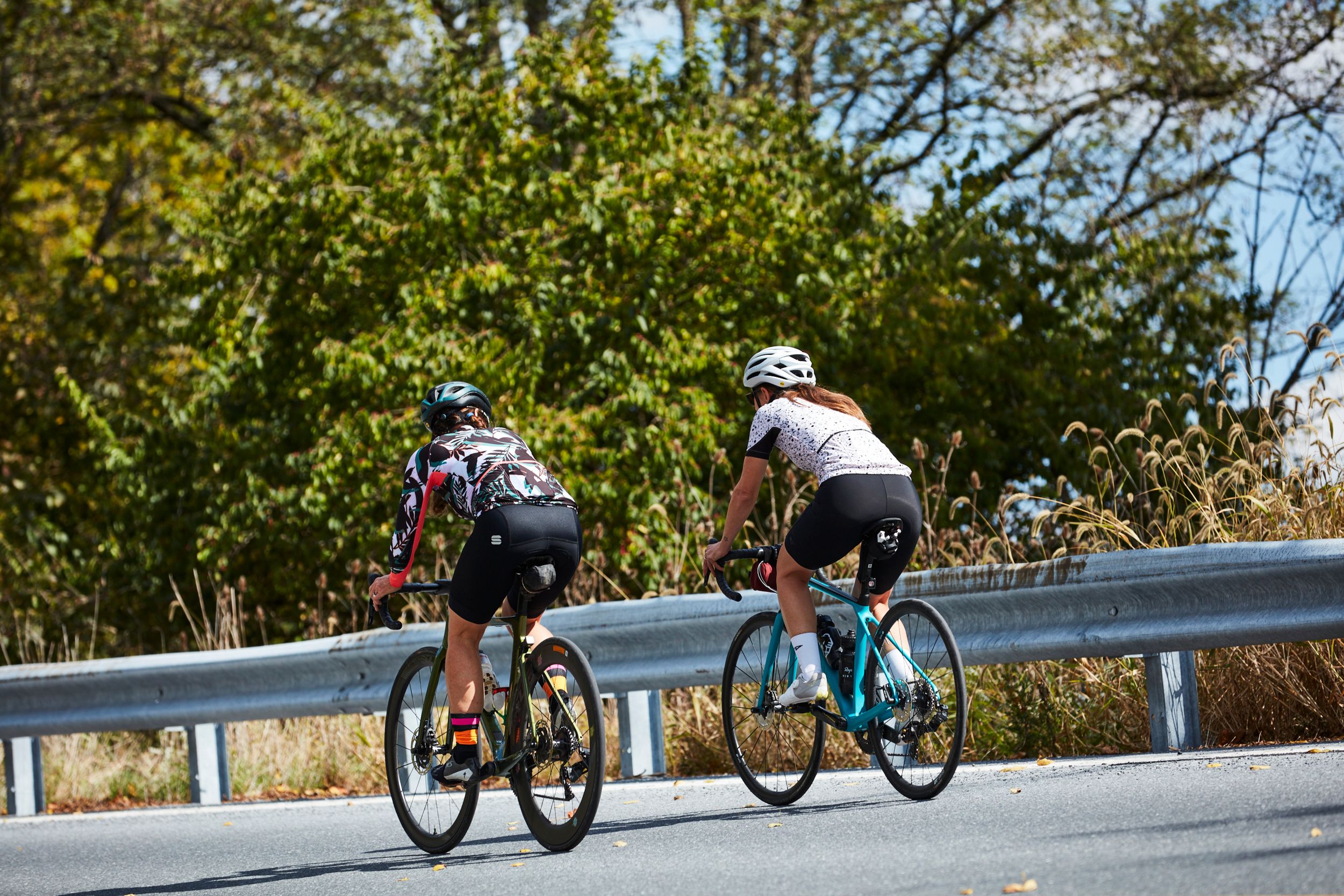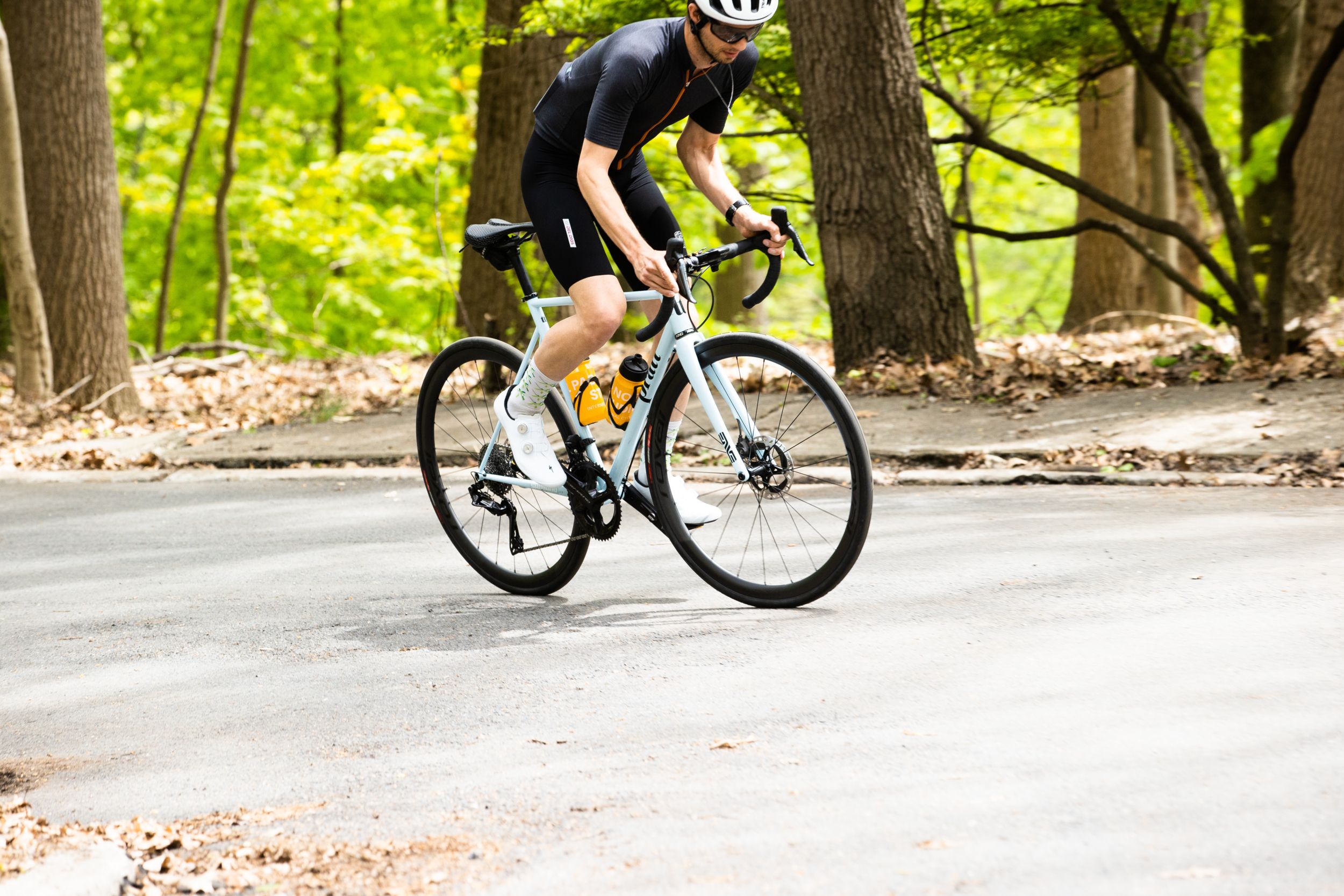All The Muscles You Need To Ride A Bike Fast
It's more than just the quads: We have a body's-worth of muscles to work on to get to peak physical fitness on the bike.
Take a minute to watch someone ride a bike down the street. Chances are, you can make an educated guess as to which muscles work to power the bike. Clearly, the legs are getting in on the action, and there’s probably some core engagement required to help maintain proper posture, right?
Certainly, you’re on the right track. While cycling is generally considered an aerobic form of exercise designed to improve heart and lung health, riding a bike requires the use of many different major muscle groups, and a regular cycling workout can contribute to significant muscle growth and strength.
“Muscle building requires muscle overload or strain to a muscle allowing for a training response, which can result in muscle building. For cycling, this involves the primary engines of cycling—specifically, the quadriceps, hamstrings, and calves,” says M. Ramin Modabber, M.D., orthopaedic surgeon at Cedars-Sinai Kerlan-Jobe Institute in Los Angeles and medical director and chief medical officer of the Amgen Tour of California.
That said, he’s quick to point out that the extent to which you’re likely to build muscle (and to some degree, which muscles you end up building) depends on factors like the type of cycling you’re doing, age, and overall health and nutrition.
Every Major Muscle Worked While Biking
More than anything, the muscles targeted during cycling include the major muscle groups of your legs, including the quads, hamstrings, and calves. Additionally, your glute maximus (that’s the biggest muscle of your backside) provides a significant source of power, and your anterior tibialis (the muscle that runs up the front of your shin) also plays a role.
“The knee and hip extenders—the glutes, calves, and quads—are firing most actively in the down stroke, while the hip flexors and hamstrings will be firing more actively on the upstroke,” Modabber says.
That said, Modabber emphasises that the experience and efficiency of a cyclist plays a role in which muscles they target most during each phase of the cycling stroke. “Pedalling styles vary rider-to-rider and the smoothest of riders can keep a smoother 360-degree force on the pedals with fewer gaps in power at the top and bottom of the pedal stroke — the times considered to be relative ‘dead spots’ in producing power,” he explains.
Here’s a more detailed break down of the muscles used while biking:

Quads
As you push forward and down on the pedals, the quads (the front of the upper thighs, running from the hips to the knees) activate, particularly toward the bottom of the stroke, as these muscles extend the knee. Research, published in the European Journal of Applied Physiology in 2016, shows that the quads fire up the most during the first, but also during the fourth quadrant of the pedal stroke, so while the knee extends, but also when you pull up to finish a revolution.
The quads produce most of the power for your rides, compared to the other muscles, so that’s why you need them strong and robust for optimal performance.

Hamstrings
On the back of the upper thighs, you have the hamstrings, another key player in cycling. The same study from 2016 shows that the hamstrings light up through most of the pedal stroke, but particularly during the second, and to some degree in the third, quadrant—that’s as you pull your pedal through the backstroke and then move from knee extension to flexion, pulling up on the pedals.
Because the hamstrings act as hip extensors, they also play a role in the downstroke.

Calves
Research says the exact activation of the calves—the gastrocnemius and soleus—depends on fitness level and ankle range of motion. But for the most part, these muscles of the posterior lower leg engage during the downstroke. They’re super important for power and forward propulsion.

Glutes
You might feel your glutes kick into gear more on hills than flat ground, but this big muscle group of the butt fires up on all terrain. It lights up most during the downstroke of your revolutions, as they primarily extend the hips.
In addition to powering your pedal stroke, the glutes are also important for pelvic stabilisation, which you need throughout your entire ride, for efficiency and comfort.

Tibialis Anterior
The tibialis anterior, the muscle on the front of the lower leg, is responsible for ankle flexion (toes pointing up to shin) and you engage it primarily during the upward action, as you do the scrape-mud-off-your heel motion. While people might focus on the back of the legs, a.k.a. the calves, this anterior muscle also supports your rides.

Core Muscles
It’s not just the lower body that’s responsible for keeping you moving efficiently while on the bike. Your core muscles, including the deep stabilizing muscles of your back and abs, help you to stay balanced.
Michael Hamlin, C.S.C.S, certified personal trainer, strength coach, and owner of Everflex Fitness, points to a study published in Sensors in 2022 that compared the muscle activation of the upper body and torso when participants were simply standing versus cycling. The results found that the infraspinatus (part of the rotator cuff muscle group), latissimus dorsi (the largest muscle of your back), external oblique (part of your core abdominal muscles), and pectoralis major (part of your chest) showed significantly higher activation when pedaling, although the actual results were still on the lower side.

Upper Body
As mentioned, your arms and shoulders also play a role in maintaining stability as you ride. You need a strong, stable upper body to help with bike handling, as well as balance as you pedal. Research also suggests that the more strength you have in your upper body, the more force you can put into the handlebars, which translates to the power you put through the pedals.
The Difference Between Indoor and Outdoor Cycling and the Muscles You Work
To be clear, the specific muscle groups used during indoor cycling or outdoor cycling are the same, but outdoor cycling may require greater muscle activation to assist with balance and coordination. “The core muscle engagement will be more considerable when balancing the bicycle outside as opposed to simply pedaling indoors,” Modabber says.
He acknowledges that some of the movements performed during indoor classes (standing out of the saddle and frequently changing positions) can help work on core strength and overall fitness, but that they don’t translate well to outdoor riding. “[Those movements are] inefficient in producing power when riding outside,” he clarifies.
It’s also important to consider terrain when comparing indoor and outdoor riding. “Uphill cycling will engage the lower body muscles more intensely, while downhill cycling may require more work from the upper body muscles to maintain balance, as more of your weight is on your arms in this position, just as in downhill racing,” says Hamlin.
While you can increase the resistance on an indoor bike, you can’t mimic actual changes in terrain, or even the additional core engagement required to ride around a curve. When riding a curve outside, the bike (and your entire body) must lean to one side. This requires more core and upper body engagement to keep yourself from falling over as you make the turn and re-right yourself as you head into a straightaway.
The Pedals You Use Can Change the Muscles You Work While Biking
One other thing to consider in terms of muscle activation is the type of pedals you’re using. Even if you’ve never thought about it before, the choice of a flat pedal, versus one with a cage to keep your foot in place, versus a clipless pedal all affect how your lower body muscles activate as you perform each rotation.
“Clipping in will produce a smoother transfer of leg power to the pedals and allow for more calf, hamstring, and hip flexor involvement than a standard pedal. Cycling with a pedal cage may allow for a bit more power on the upstroke, but won’t engage the hamstrings, calves, and hip flexors [as much],” explains Modabber.
How to Strengthen Your Cycling Muscles With Cross-Training
To achieve a well-rounded workout program, Modabber says you’ll likely want to cross-train on your non-cycling days to make sure you’re maintaining a well-balanced approach to strength and fitness.
While cycling targets and strengthens a large number of major muscle groups, it’s clearly the lower body that takes the brunt of the workout. To target those muscles, focus on squats, lunges, deadlifts, and calf raises. You can also add in banded side steps, lateral lunges, and curtsy lunges to target the outer and inner thighs (a.k.a. abductors and adductors) more. Add a lower-body workout to your schedule at least once per week.
Hamlin adds that one important lower-body muscle that should be targeted during cross-training sessions is the gluteus medius, which is a smaller glute muscle that runs along the outside of your butt and hips and is responsible for hip abduction (leg moving away from the midline). “This muscle is fired a lot during lateral movements. Cycling doesn’t provide as much activation here. As a trainer, I like to add lateral movements to cycling and running programs for this reason. The gluteus medius is very important in hip stability and can help prevent injury by training it more often,” he explains.
Modabber suggests adding an upper body and core-strengthening program to your overall routine. You can keep it simple—about one to three times per week—and perform at least one exercise per major muscle group of your upper body. For example, push-ups, pull-ups, overhead dumbbell shoulder presses, overhead dumbbell triceps extensions, and biceps curls. Two to three sets of each exercise performed for 10 to 12 reps to fatigue is a good start.
Rounding out your strength workouts with planks, oblique twists, dead bugs, and bird dogs to hit the major muscle groups of the core will help with core stability, as well.
Finally, Modabber is quick to highlight the importance of stretching. “Stretching all the mentioned muscles to keep them healthy and prevent injury is paramount to continued success and a cyclist’s longevity,” he says.
READ MORE ON: calves glutes health and fitness muscles strength training



